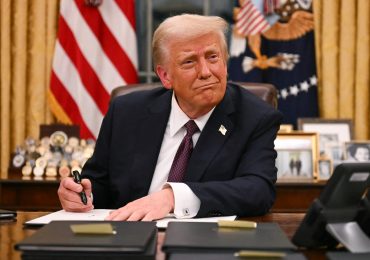The biggest challenges—and greatest opportunities—for decarbonizing industry are playing out just off the highway, a few miles from downtown Chicago in a nondescript industrial park.
Here alongside the Chicago River, the Ozinga concrete company is producing and selling a lower-carbon version of concrete made using a recycled steel byproduct.
[time-brightcove not-tgx=”true”]
Ozinga is a small company trying to tackle a big problem. The global cement industry is responsible for some 8% of the world’s emissions, according to the International Energy Agency. (Cement is the key ingredient in concrete). And efforts like Ozinga’s represent an opportunity to bring that figure down quickly. There’s just one problem: while the technology may be proven, the market isn’t. “Who’s driving the demand?” Marty Ozinga, the company’s CEO, told me from a conference room as concrete trucks rolled down the street behind us. “That’s the tricky part right now.”
It’s not that there isn’t demand. Big tech companies building new data centers are especially eager to pay for low-carbon solutions. Federal and state governments are seeking low-carbon products for their projects. And many end users of buildings—think of companies that lease office space—would be willing to pay a small premium.
But connecting that demand with supply can be difficult. Even if building occupants are keen to work in a green building, contractors are resistant to anything that raises the cost. And the supply of green cement isn’t necessarily located in the places where developers want to build.
And therein lies the challenge at the heart of efforts not just to decarbonize cement and concrete but a whole range of industries at this hour in history. Industry, which includes manufacturing and steel, among other things—is responsible for around a quarter of global emissions. We have the technical knowledge to cut emissions—and often the additional cost is minimal. But in many cases the world lacks the business models, financing mechanisms, and policy support needed to make it work.
Ozinga is a rare case. The company is family owned and is financing a $250 million green cement facility with its own money. It’s a bet that the rest of the market will come along—and when it does, the company will have a first mover advantage.
But truly achieving industrial decarbonization will require companies, governments, and financial institutions to come together and bridge this divide. In the coming weeks and months, TIME’s Futures series will explore the companies and leaders trying to bridge that gap.
Off and on for the last several decades, investors have poured billions into early stage companies working on innovative technologies that could catapult the energy transition forward. These investments benefited from government spending on research to lay the groundwork.
As a result, a slew of technologies have now reached a place where they are reliable and, in some cases, similar in cost to their old school counterparts. But the disconnects between the technology and fully entering marketplace are myriad. Financial institutions want to see long-term contracts for green commodities before they lend money for projects, but potential buyers don’t want to sign up early and pay too high a cost. Buyers who are willing to pay for the green commodities that come from industrial decarbonization may not be located in the places where the commodities are produced, in some cases requiring new infrastructure and in others making it totally inaccessible. And end users who are willing to pay more for green don’t always have an easy way to connect with—and pay—the companies at the top of the supply chain.
These gaps are nothing new to climate experts familiar with the landscape of industrial decarbonization. Indeed, policies like the U.S. Inflation Reduction Act now provide incentives that are designed to spark financial innovation and bridge the divide. Funding for the Department of Energy’s Loan Program Office, for example, gives the agency the ability to lend money to help companies commercialize new industrial technologies where traditional banks have limited expertise.
And other institutions are getting involved, too. This week, for example, a coalition led by the Bezos Earth Fund formally launched a green market maker that will help connect supply and demand of green commodities in order to bring these innovations to scale. And companies are forming buyers coalitions where businesses jointly commit to buying a green commodity explicitly to help stimulate demand. Meanwhile, Ozinga is finding opportunity in supplying low carbon cement to big tech companies.
And, as with any invention, the best innovation may be yet to come.
Leave a comment








